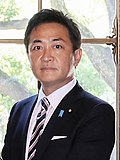This article may need to be rewritten to comply with Wikipedia's quality standards.(June 2023) |
The 2023 Japanese unified local elections were held across the country on 9 and 23 April 2023. In total 15,047 candidates were elected in 1,008 races with a high of 1,685 in Hokkaido and a low of 1 in Okinawa. [1]
Contents
- Background
- LDP's declining popularity and Kishida's attempts to rebound it
- Candidate shortage
- April elections by prefecture in Stage 1 and 2
- Results
- Stage 1: 9 April
- Stage II: 23 April
- Aftermath and reactions
- See also
- References
| |||||||||||||||||||||||||||||||||||||||||||||||||||||||||||||||||||||||||||||||||||||||||||||||||
| |||||||||||||||||||||||||||||||||||||||||||||||||||||||||||||||||||||||||||||||||||||||||||||||||
 | |||||||||||||||||||||||||||||||||||||||||||||||||||||||||||||||||||||||||||||||||||||||||||||||||
The ruling Liberal Democratic Party (LDP) scored a comfortable victory. Six LDP (and Komei) endorsed candidates won the governorship. The LDP also managed to win more than half of all the prefectural assembly seats in the prefecture that held elections. [2]
Major victories were also won by Nippon Ishin no Kai. In addition to winning in its home base of Osaka, Ishin also won the contest for governor of Nara and increased the number of seats it now holds in neighboring prefectures. The party secured majorities in the Osaka prefectural and municipal assemblies for the first time ever, and they even took home six seats in the Kanagawa Prefectural Assembly. [3]
Turnouts this month were at record lows for all elections with the exception of the Hakodate mayoral contest [4] and mayoral and assembly races in Tokyo wards which were higher than the last election but still did not top 50%. [5]
This maintains a pattern in Japan, where fewer and fewer people are casting ballots ever since the LDP took back control in 2012. [4]







